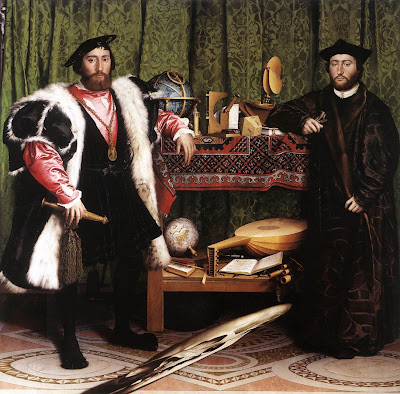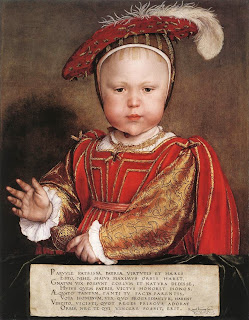When Raphael painted the Alba
Madonna c. 1510, Italy was at peace in theocracy, but in just a few decades the
religious unity of Western Christendom was shattered. The Protestant Reformation, led by Martin
Luther, officially began in 1517 with the publication of Luther's 95
Theses. The tension, unrest, and
disorder in Rome led to an art style known as Mannerism, which was a deliberate
revolt by artists against the goals of the Renaissance. Mannerism tried to achieve imbalance and
restlessness. Humans had impossible
poses and looked supernaturally graceful.
The quintessential example of this is Parmigianino's Madonna with the
Long Neck, painted around 1535 (yeah, that's its real title).
The Madonna is enormous and looks
calm even though her Child is about to fall.
Christ's proportions are unnatural, and He looks quite pale with His
arms spread in the position of crucifixion.
The crowd on the left seems uninterested in the baby Jesus, and Mary
herself seems unconcerned with Christ (perhaps a critique of the church for its
increasing worldliness). The background
of the painting is quite confusing. Is
the setting interior or exterior? (It
would appear to be both). The background
on the right is spacious, whereas the foreground is crowded. The man in the background holding the scroll
is unidentified.












